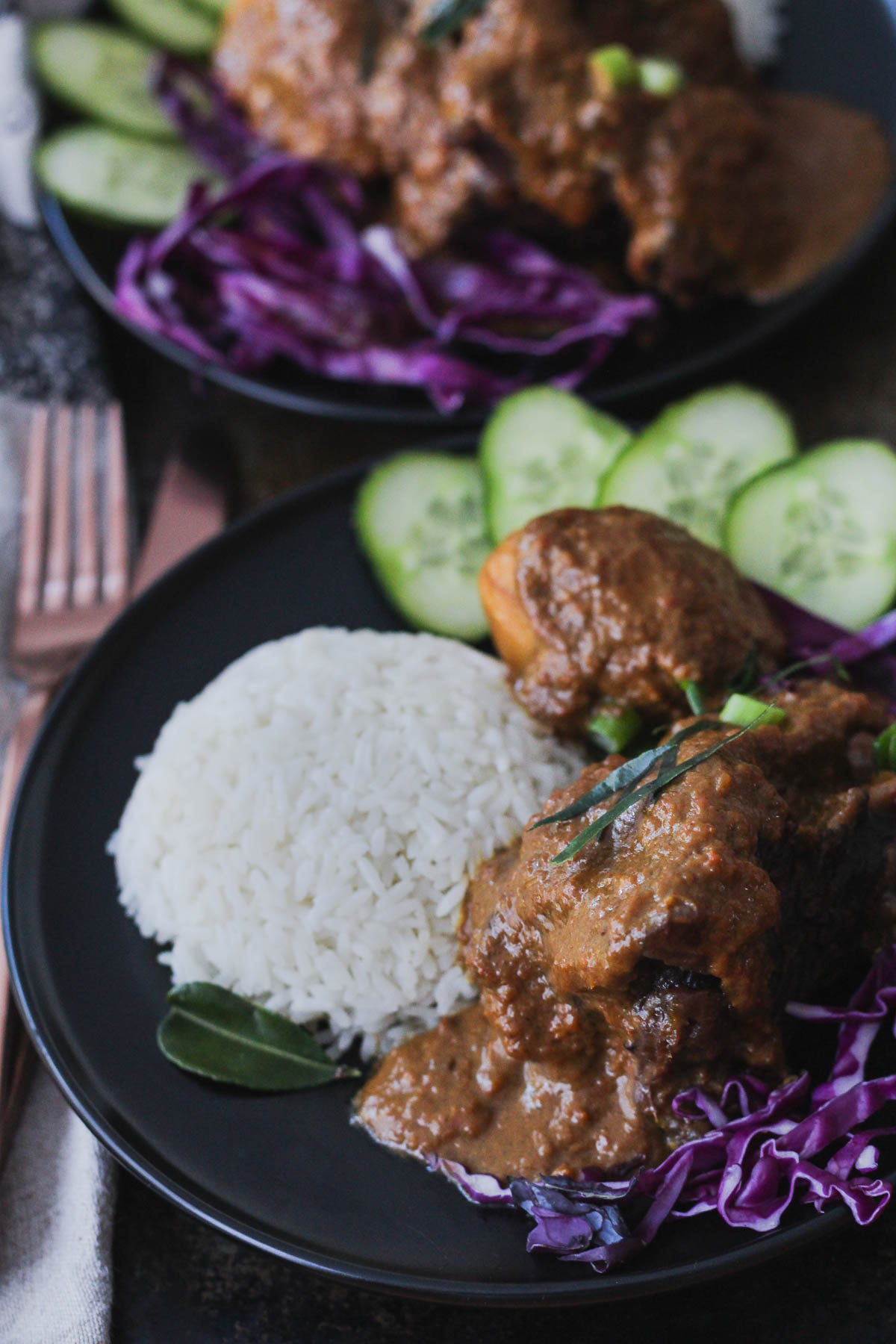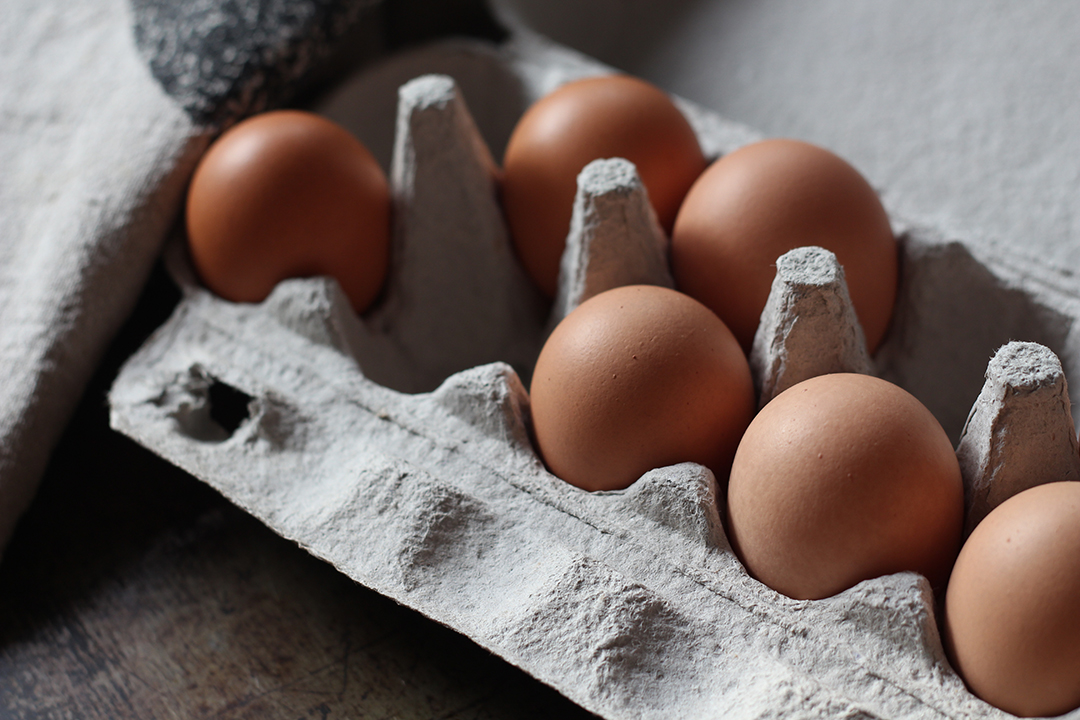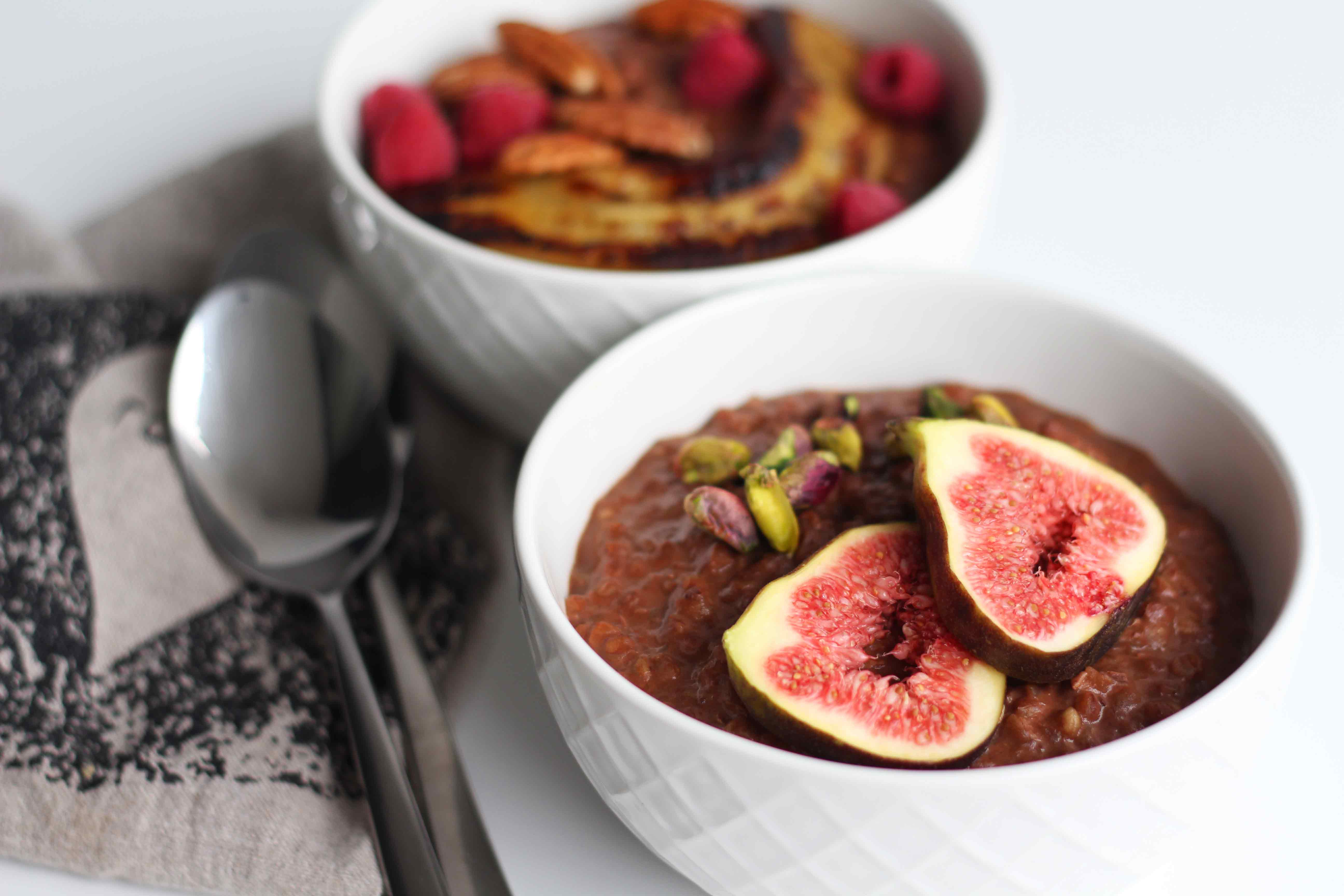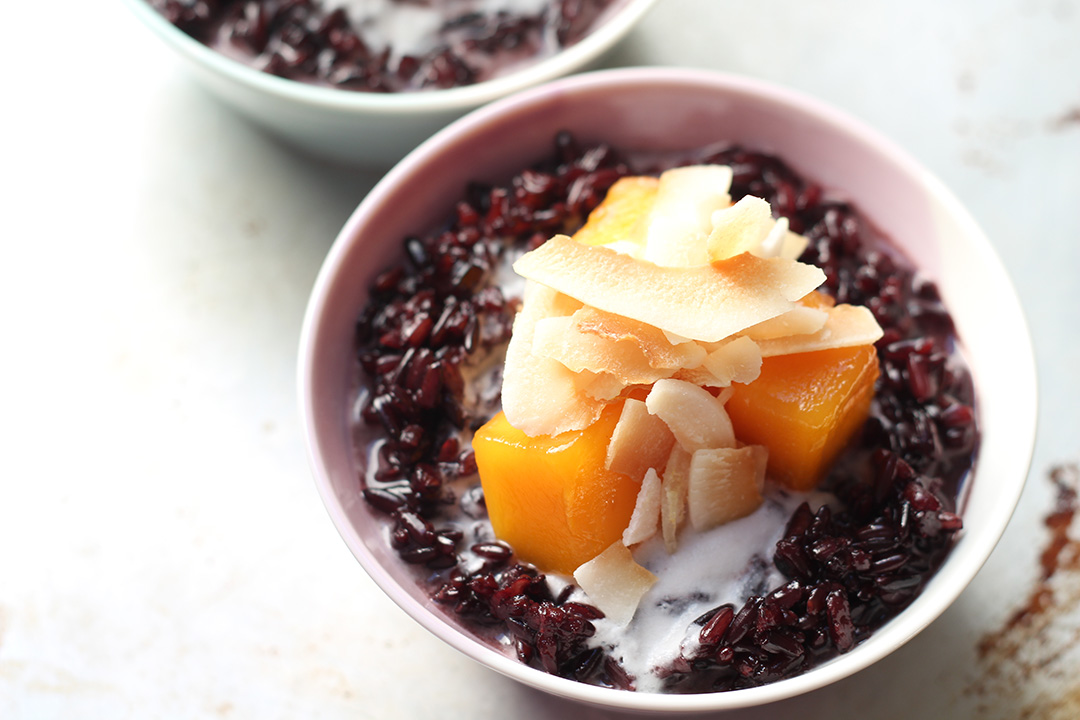I'm not going to pressure anyone in to buying a pressure cooker, but if you do want to take the pressure down in your kitchen, you know what to do....
I bought my Pressure Cooker only a few short years ago, and now I really cannot imagine my cooking life without it. Technically, it's a multi-cooker (very similar to the crazy popular Instant Pot) but I use it mostly as a pressure cooker. I use it almost daily, to make decadent dishes such as my Beef Cheek Rendang, to sweeter fare like the Chocolate Buckwheat porridge that is almost like having dessert for breakfast.

Instant Pot photo credit: Lindsay Cotter
So, after using it for a while now, here are the top 10 things I love about my pressure cooker. Plus a bonus 11th one because I just couldn't help myself - I love my pressure cooker that much.
I've also covered getting started, safety considerations, nutrition info and a slow cooker vs. pressure cooker comparison.
I always recommend this gadget to my clients, friends and family as it makes such a huge difference in terms of kitchen efficiency and versatility. I would choose this over a Thermomix any day (come at me, Thermomix people).
This post is based on my use of an electric pressure cooker rather than a stove top pressure cooker. One difference to keep in mind between the two types is that the electric ones tend to operate at a slightly lower level of pressure. This means when looking at recipes, a tiny bit of extra time may be needed if you are using an electric pressure cooker, if the recipe author has used a stovetop one. I find this is only relevant to food that takes longer to cook, such as meat and legumes and I've never had an issue at all in this regard.
Here we go!
1. It's lightning fast
No doubt, this is the feature that most people have heard of and is one of the main attractions. Pressure cookers work by raising the boiling point of the contents - this is what makes the food cook so much faster. Depending on the food, the pressure cooker can cut the cooking time to around ⅕th of what the slow cooker takes. And, no, it has no real negative effect on the nutrient quality of the food - see the nutrition section further down.
2. No babysitting required
This is not a gadget that needs babysitting. It's a set and forget deal. You put your ingredients in, occasionally browning them first (depending on the recipe), then set to the desired time and go do other things. Once the time is up, you either release the pressure manually, or let it release naturally/on its own. The method used depends on the recipe so always ensure to follow the recipe you are given! It's really not a machine that is forgiving when it comes to changing details of the recipe such as timing and release method. So, try not to go rogue unless you are really experienced using a pressure cooker.
As an example of this "set and forget" idea, gone are the days of endlessly stirring risotto. The pressure cooker makes risotto in only 5 minutes once the ingredients have been prepped. There is no need to stand there stirring, the pressure cooker magically delivers a perfect risotto - see Point 5.
3. Broth and a whole chicken in an hour
Yes you read that right - check out Sarah's recipe from Nutrients You Fools.
Beef broth from Bill and Hayley at Primal Palate.
4. Pho ga in 30 minutes or Pho bo in 90 minutes
Making a delicious, fragrant pho in a pressure cooker is seriously life changing for both foodies and health geeks alike. Getting a full flavoured Pho ga in only 30 minutes or so is almost unbelievable...that is, until you try it for yourself.
The chicken version is ultra quick and the beef version takes a bit longer -beef takes longer to cook and I also like to roast the meat at high heat for a short time before it goes in the pressure cooker for some extra meaty flavour.
Check out the Serious Eats recipe for Pho ga (chicken) and Zenbelly for the Pho bo (beef) recipe.
5. No-stir risotto in a fraction of the time
One of the annoying things about making risotto is the dedicated hands-on time where the risotto needs to be stirred constantly for 30 or more minutes. Free yourself up by cooking risotto in a pressure cooker - it requires no endless stirring and is also done in less than half the time. The taste and texture are perfect.
I really love this tasty Serious Eats recipe for Pressure Cooker Mushroom Risotto.
6. Decadent Beef Cheek Rendang in 80 minutes cook time
This is one of the recipes I developed that I'm really proud of. Drawing on a rich tradition from Indonesia, this Rendang combines my favourite recipes and adapts them to the pressure cooker. This is a seriously delicious and unforgettable dish. Get the recipe here for Pressure Cooker Beef Cheek Rendang.
7. Perfect boiled eggs
Getting boiled eggs just right on the stove can be a recipe in frustration. But, cooking them in a pressure cooker removes the frustration as they really are a "set and forget" deal.
Jacky and Amy over at Pressurecookrecipes.com have done the hard work for us by testing different times in the pressure cooker, so you can enjoy your boiled eggs however you prefer them - hard, soft or medium. Not only that, but cooking them in the pressure cooker also results in eggs that are seriously easy to peel - yet another frustration when making boiled eggs.
Check out the blog post here all about cooking boiled eggs in the pressure cooker.
8. Legumes made lightning fast with no need to pre-soak
We all know legumes are an excellent addition to our diet, with decent levels of protein, fibre and micronutrients such as folate. But, let's face it - they are a chore to cook on the stove, even if the cooking time can be reduced by pre-soaking. Using a pressure cooker removes the need to plan ahead with soaking and also cooks the legumes lightning fast. No more waiting hours for beans. Sure, you could buy them pre-cooked in cans but it is far more economical to buy dried beans and cook them yourself. I'm also not such a fan of the taste of canned legumes.
Here is a handy chart for cooking legumes in your pressure cooker to give you an idea of how quick it is.
These are some of my most excellent legume recipes, where cooking the legumes in the pressure cooker has made the process extra quick and painless.
9. Speedy, no fuss Chocolate Buckwheat Porridge
This recipe for Chocolate Buckwheat Porridge is like dessert for breakfast and it's made in a flash. There is no standing, stirring or checking the water level.
10. Fluffy perfect rice
No need to buy and store a dedicated rice maker when you have a pressure cooker.
Again, Jacky and Amy from Pressurecookrecipes.com have done the hard work by testing the best method for making perfect rice in the pressure cooker.
11. Black Rice Pudding
Lucky number 11 is this recent recipe - super delicious and quick to make. Just like risotto, no babysitting a pot on the stove. Perfect for summer because the pressure cooker doesn't raise the temperature in the kitchen and when this pudding is cooled and served with juicy mango pieces, it's unbeatable.
Get the recipe for Black Rice Pudding and enjoy your summer eating - you're welcome!
Getting Started with your Instant Pot/Multicooker
Here are some tips to get you started if you have taken the leap and bought one:
- Always, and I mean always, read the instructions for your machine before you get started. This is not negotiable. Get to know the features of your machine and also pay attention to the minimum required liquid amount. If a sauce is too thick, even having the minimum liquid amount may not work to bring the machine to pressure. See next point.
- When getting started, I highly recommend following trusted recipes until you get the hang of using it. Only when you're confident is it a good idea to start experimenting, usually after a month or two of regular use. Have a look at the Resources list at the end of this article for my trusted recipe sources for the pressure cooker.
- There are two methods for releasing the pressure: "natural" release and immediate release. Natural release means letting the pressure release on its own, without moving the pressure valve. Immediate release is the opposite. When doing the latter, sometimes it helps to put a kitchen towel on top of the valve to prevent too much liquid sputtering - this actually doesn't happen too often.
- Pay good attention to details in the recipe, particularly liquid amounts, cook time and release method as these are key to getting good results
- Never go above the max fill line on the inner bowl
- If the pressure cooker is pretty full with liquid (for example, when making stock), do not ever release the pressure manually/immediately as you'll end up with stock over the ceiling...yes, this happened to me on my very first use!
- An electric pressure cooker should never be put under cold running water - so if you ever see a recipe mention that, it is referring to a stovetop pressure cooker.
- Pro-tip: to bring up to pressure faster, use boiling water in place of room temperature water (or cold water) when the recipe calls for straight water to be added to the cooker
Nutrition and the pressure cooker
From the research I could locate, it appears that cooking some foods in the pressure cooker will reduce specific nutrients (Vitamin C, thiamin for example) more than steaming, but less so than boiling. The difference between steaming and pressure cooking isn't enough to avoid using a pressure cooker though.
Food scientist Kantha Shelke, Ph.D was quoted on the website Eating Well as saying that pressure cooking can actually make nutrients more bio-available and increase digestability of food. So, that is a clear benefit to using a pressure cooker over other cooking methods.
A great advantage of using a pressure cooker is the avoidance of carcinogenic compounds that can be produced with high heat methods such as frying, grilling and roasting. Having said that, excessive browning of meat before cooking it in the pressure cooker will still produce some of these compounds, so it is still important to be mindful of not over-browning food.
I also tend to think that any cooking gadget which significantly delivers convenience will only benefit the overall nutrition status of an individual, simply because it makes home cooking that much easier and fun.
Practice safe pressure cooking!
Modern pressure cookers are very safe compared to older machines.
The main safety features that modern pressure cookers have are valves to release excess pressure and lids that lock firmly until the pressure has been released.
So, rest assured that as long as you follow your machine's instructions, it is highly unlikely that anything will go wrong.
I recommend buying some Ove Gloves to lift the inner bowl out safely.
Here are some additional tips from The Spruce to keep your pressure cooking adventures safe.
How does the pressure cooker compare to slow cooking?
OK, this question was a popular one when I asked my Facebook followers what they wanted to know.
Anything you can cook in the slow cooker, you can cook in the pressure cooker. With the exception perhaps of certain very specific things such as caramelised onions. I also prefer to slowly poach chicken breast in the slow cooker - it comes out amazingly juicy. I have cooked them in the pressure cooker, but I think the slow cooker wins in that department.
So, the pressure cooker is absolutely suitable for cheap/tough cuts of meat that normally require long cooking times at a low temperature. It significantly reduces that long cooking time without any negative effect on meat tenderness.
The pressure cooker generally requires much less water than the slow cooker, just pay attention to the recipe you're using and always use the minimum amount as stated by the pressure cooker manufacturer.
If I had to choose between the two, I would always go for the pressure cooker, no doubt about it.
My favourite Pressure Cooking resources
Here are my favourite Pressure Cooking resources:
- Hip Pressure Cooking
- Pressure Cook Recipes.com with Jacky and Amy
- The Domestic Man - Russ Crandall's excellent blog featuring traditional dishes from around the world
- Simon Miller from Zenbelly has many free recipes on her site and has compiled them in a free eBook!
- Lindsay and Bjork, the food blogging superstars of Pinch of Yum have been dipping their toes in the Instant Pot world recently with their Instant Pot series - featuring many great recipes including a delicious noodle dish I have made
- The Inquiring Chef has many great pressure cooking/Instant Pot recipes and also a great guide to pot-in-pot cooking!
- I also love this handy visual for pot-in-pot cooking from The Inquiring Chef.
Here are some other things you need to know about using a pressure cooker
- Some foods still need to be browned for maximum flavour before they are cooked under pressure. For example, when making Pho ga, you still need to char the ginger and onion for that signature flavour. Spices also are best cooked in some oil before you set it to cook under pressure (for example rendang paste).
- Sauces may need reducing and/or thickening after the pressure cooking part of the cooking process is done. I find that it's good to avoid adding too much liquid to the pressure cooker - I like to use just enough to help it come to pressure and no more.
- When I've experimented with my pressure cooker, things don't always turn out how I want them - but that is true of any kitchen device and recipe testing in general. So, first start with recipes known to work, then experiment when you are more confident.
My collection of original pressure cooker recipes
My pressure cooker recipes are available in a nice and neat archive.
Now, go forth and confidently use your pressure cooker!
If you have any questions for me, fire away in the comments below.
If you are a new or experienced pressure cooker user, I'd love to hear what you've been making!







Hi Allison! Loved your post about pressure cookers and I too cannot understand how they are not a vital piece of equipment in every kitchen!
I've had my pressure cooker for 15 years now and one of the great things my kids and I like to do is make our own hummus. It's so damn easy it almost feels like cheating. No soaking and washing several times and then boiling away to get those plump squishy chickpeas. Just throw them in and voila in usually 90 minutes ( I like them really squished!)
I'll definitely have to try out your recipes though as I'm sure my kids wouldn't mind having Chocolate Buckwheat Porridge for breakfast too!
Is my Philips All in One Viva 2237 an instant pot? I want to follow some of your recipes to cook
Hi Jacquie - Yes it is! Let me know what you make!